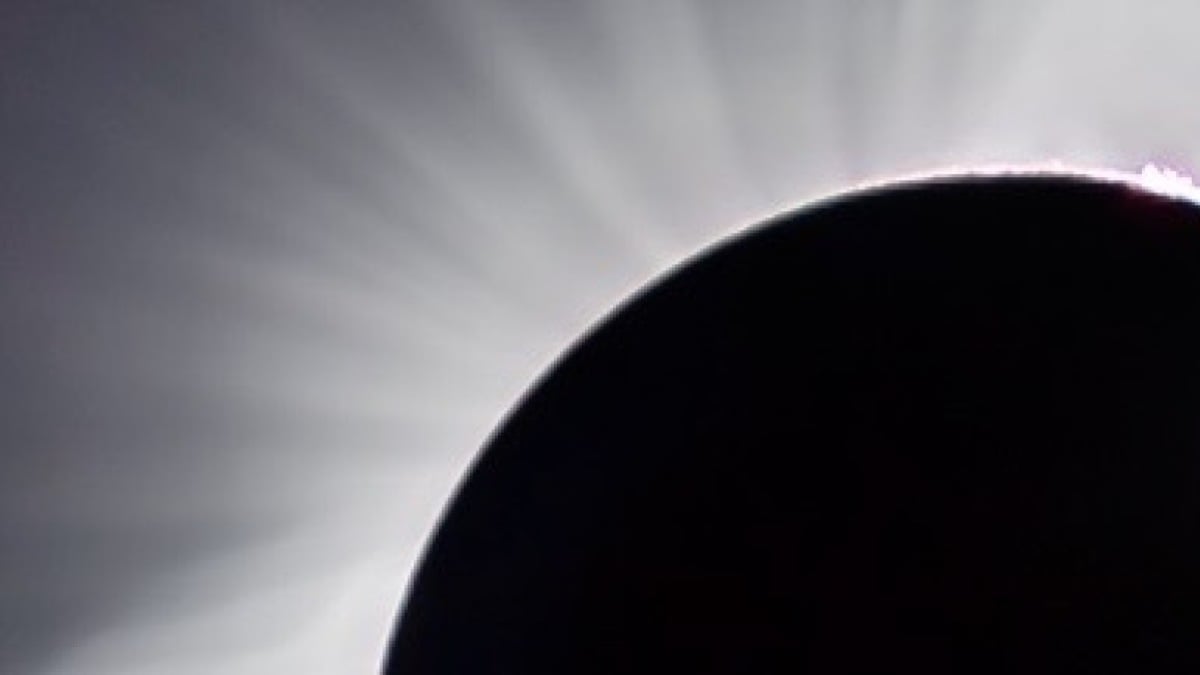Entertainment
2024 solar eclipse: Everything you need to know

A total solar eclipse will cross North America, passing over Mexico, the United States, and Canada on April 8, the likes of which won’t return to the continent until 2044.
This special astronomical phenomenon happens when the moon lines up between the sun and Earth in space, completely blocking the face of the sun for a brief period and exposing the sun’s corona. It can confuse wildlife and gobsmack even the most informed audience.
“It gives you that sense of place, that sense of belonging, and also smallness in the universe, and how did we get so lucky to be on this place where things just happened to align this way?” said Kelly Korreck, NASA program manager for the eclipse.
Over the past few months, Mashable has diligently reported everything you need to know about this stellar event. Here’s a round-up of our guides and coverage.
How often total solar eclipses happen
A total solar eclipse occurs when the moon comes between the sun and Earth. During that brief period when the sun is entirely hidden behind the moon — up to 4.5 minutes this time — the sky will darken to twilight.
When the sun is concealed, called “totality,” people have the rare chance to observe the sun’s corona around the edges of the moon. The corona, the outer layer of the sun’s atmosphere, is normally washed out by the much brighter solar surface.
As Mashable has reported, this special alignment happens on our planet about every year or two. But with over 70 percent of Earth’s surface covered by oceans, viewing such an event on land is not as common. Even more unusual is living in a place where the eclipse comes to you: On average, a total solar eclipse returns to the same location about every 375 years.
The phenomenon has transfixed civilizations throughout history, and ancient peoples have associated eclipses with superstitions and dread. But most people today understand total solar eclipses as harmless natural events. Astronomers often describe their eclipse experiences as full of introspection, ecstasy, and wonder.

A map shows where the moon’s shadow will cross over the United States, known as the path of totality, during the April 2024 solar eclipse.
Credit: NASA’s Scientific Visualization Studio
Solar eclipse path calculators show which locations will experience totality
The moon will cast its shadow over the continent starting on Mexico’s western coast at 11:07 a.m. PT, sweeping from Texas to Maine, entering Canada through Ontario, and exiting from Newfoundland at 5:16 p.m. NDT. Major U.S. cities in this path will include Dallas, Indianapolis, and Cleveland. Over 31 million people live within this corridor.
If you’re not sure whether you’ll be in the right place at the right time, Mashable has compiled eclipse calculators that can help. Everywhere else in the U.S. mainland, from coast to coast, will get a partial eclipse, meaning some portion of the sun will be exposed during the peak.
Mashable Light Speed
The places with the greatest odds for clear skies are out West. Statistically, Texas and Arkansas look the most promising, though the National Oceanic and Atmospheric Administration has put together a cloudiness map that shows the likelihood of visibility based on climate records.

Experts warn spectators not to look in the direction of the sun unless it is completely concealed by the moon.
Credit: NICHOLAS KAMM / AFP via Getty Images
Solar eclipse glasses will help people safely view the eclipse. How to get yours.
Never stare at the sun, unless you’re wearing protective solar filters or the sun is completely concealed behind the moon. Otherwise, even looking briefly at the sun’s rim could cause visual impairment.
Eye doctors and scientists say the sun can literally cook a person’s eyes, causing solar retinopathy. All internet memes and kidding aside, scars caused by solar burns can be permanent and result in legal blindness, depending on the severity of the injury. Several little glances can be as harmful as a long stare.
If you’re unsure where to get glasses or need help determining if a pair complies with international safety standards, see Mashable’s guide to solar eclipse eyewear.

The ‘diamond ring’ effect is on display close to the peak moment of a total solar eclipse over Casper, Wyoming, on August 21, 2017.
Credit: Justin Sullivan / Getty Images
How the 2024 solar eclipse will differ from the last one
The total solar eclipse on April 8 will last longer, could appear darker, and the corona should look even more like a spiky crown than it did in 2017. Also, many times more people live in the path of totality, where it will be safe to remove protective eclipse glasses for the minutes when the sun is completely blocked.
Corona means “crown” in Latin. And because of where the sun is in its 11-year solar cycle, eclipse watchers are more likely to see a corona surrounded by pointy peaks, much like the name evokes.
Eclipse chasers are also excited about the chance to see wispy pink tendrils and bubbles or blobs in the corona.

Comet 12/P Pons-Brooks, aka the ‘devil comet,’ will have its closest approach to the sun just two weeks after the eclipse on April 21.
Credit: Dan Bartlett
What to look for during the eclipse
The main attraction is the sun’s corona, a gossamer white glow that will appear when the moon blocks the sun. No two coronas during totality look alike, each taking on different shapes and features due to solar activity.
But there are other delights to look forward to in the sky. Planets Jupiter and Venus will pop against the darkened palette, outshining Sirius, the brightest star.
Comet 12/P Pons-Brooks, aka the ‘devil comet,’ will have its closest approach to the sun just two weeks after the eclipse on April 21. The timing of the visit means the giant space snowball could be visible in the temporary twilight that comes with a blocked sun. The key will be whether the comet will undergo a sudden flare-up called an outburst a day or so before.
What an eclipse looks like from space
A paucity of humans have seen the effect of a total solar eclipse in space. From the vantage point of the International Space Station, a laboratory orbiting about 250 miles above Earth, astronauts have seen the moon’s shadow, like an enormous storm bearing down on their home planet.
Some other worlds experience solar eclipses, though not all planets have moons that appear large enough from the planet’s surface to completely blot out the sun. And not all moons are as appropriately sized and shaped for the job. That point was underscored when NASA’s Mars rover Perseverance recently took a video of the Martian moon Phobos partially eclipsing the sun. From the perspective of the Red Planet, the 40-second event looked a bit like a flyby potato.
-

 Business6 days ago
Business6 days agoGoogle Gemini: Everything you need to know about the new generative AI platform
-

 Entertainment7 days ago
Entertainment7 days ago2024 summer TV preview: 33 TV shows to watch this summer
-

 Business4 days ago
Business4 days agoHaun Ventures is riding the bitcoin high
-

 Entertainment6 days ago
Entertainment6 days ago‘Bridgerton’: Everything you need to remember before Season 3
-

 Entertainment4 days ago
Entertainment4 days agoHands-on with the Claude AI app: It’s pleasant to use, but janky
-

 Entertainment4 days ago
Entertainment4 days ago5 essential gadgets for turning your home into a self-care sanctuary
-

 Entertainment3 days ago
Entertainment3 days agoApple Watch Series 9 vs. SE: A smartwatch skeptic tested both for 13 days
-

 Entertainment5 days ago
Entertainment5 days agoHow to unblock porn sites: Greatest VPN for porn in 2024



























